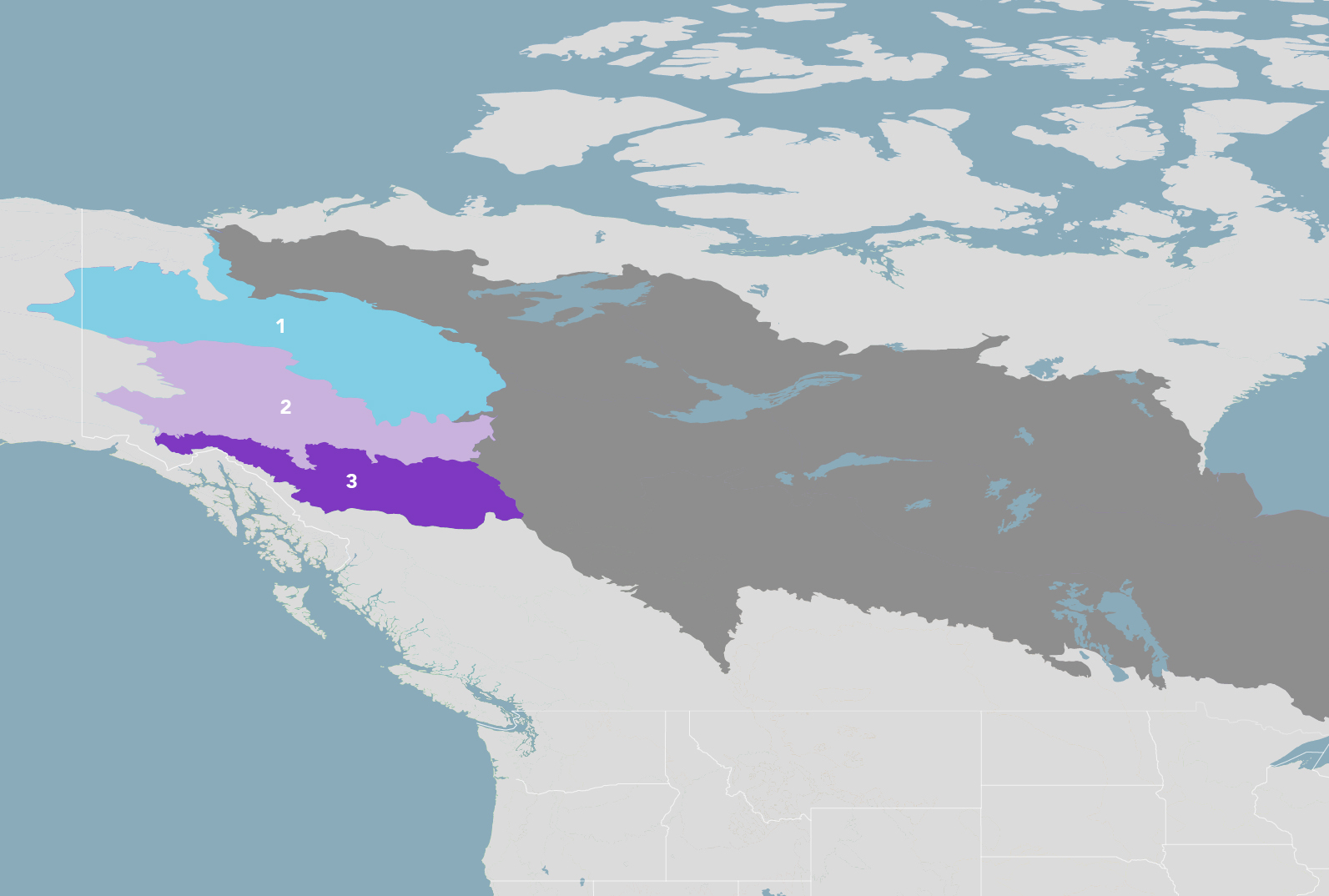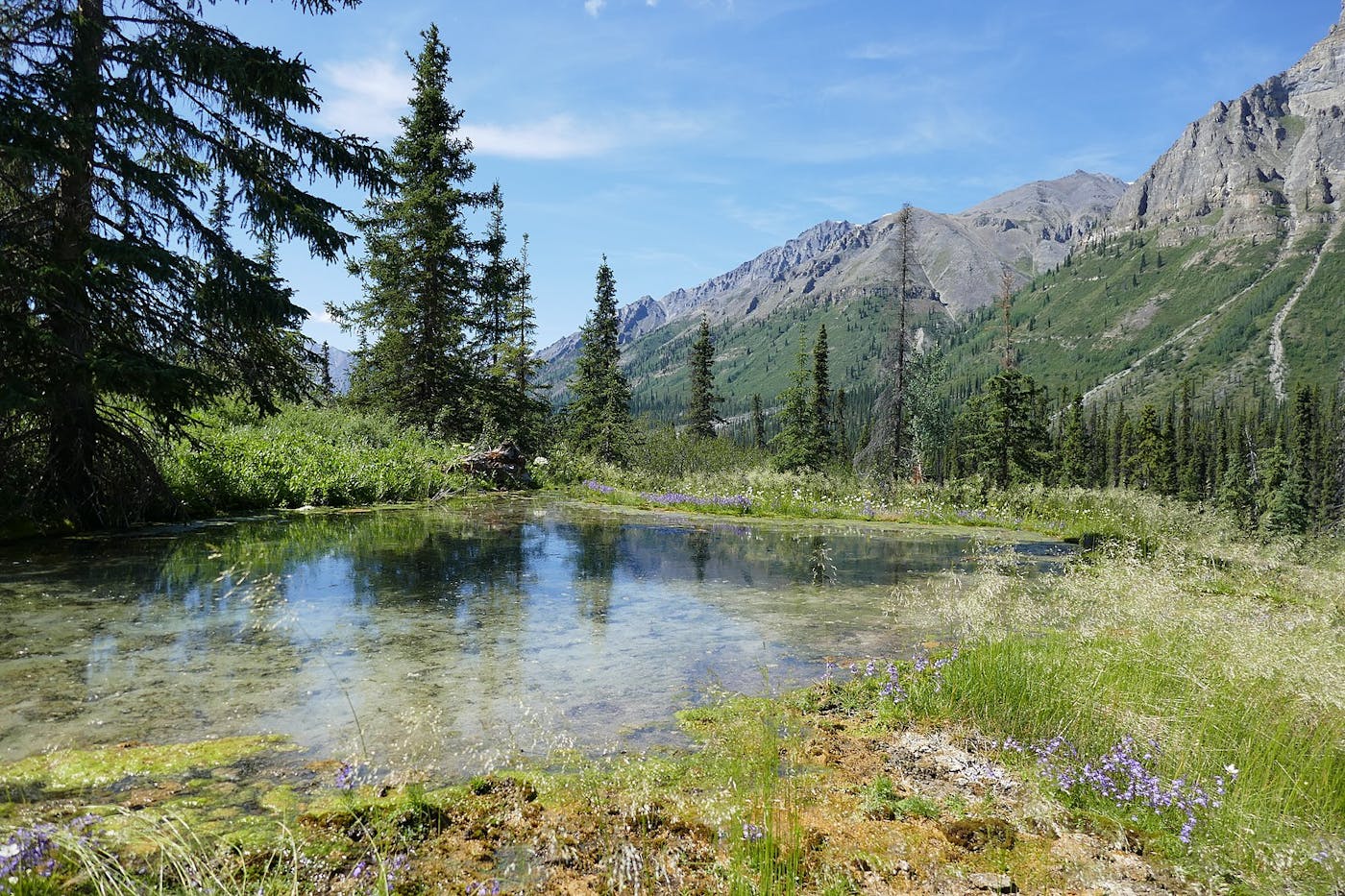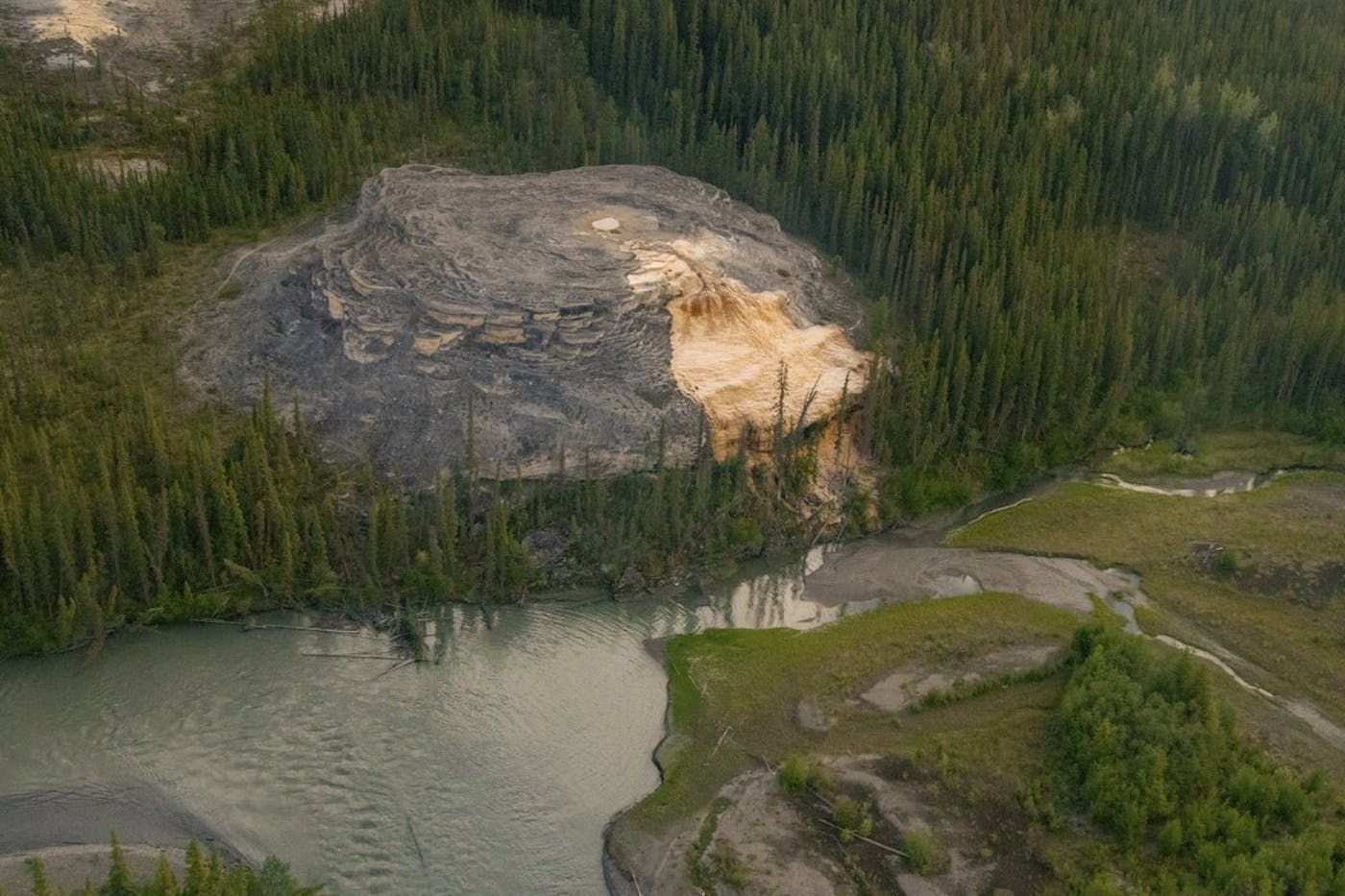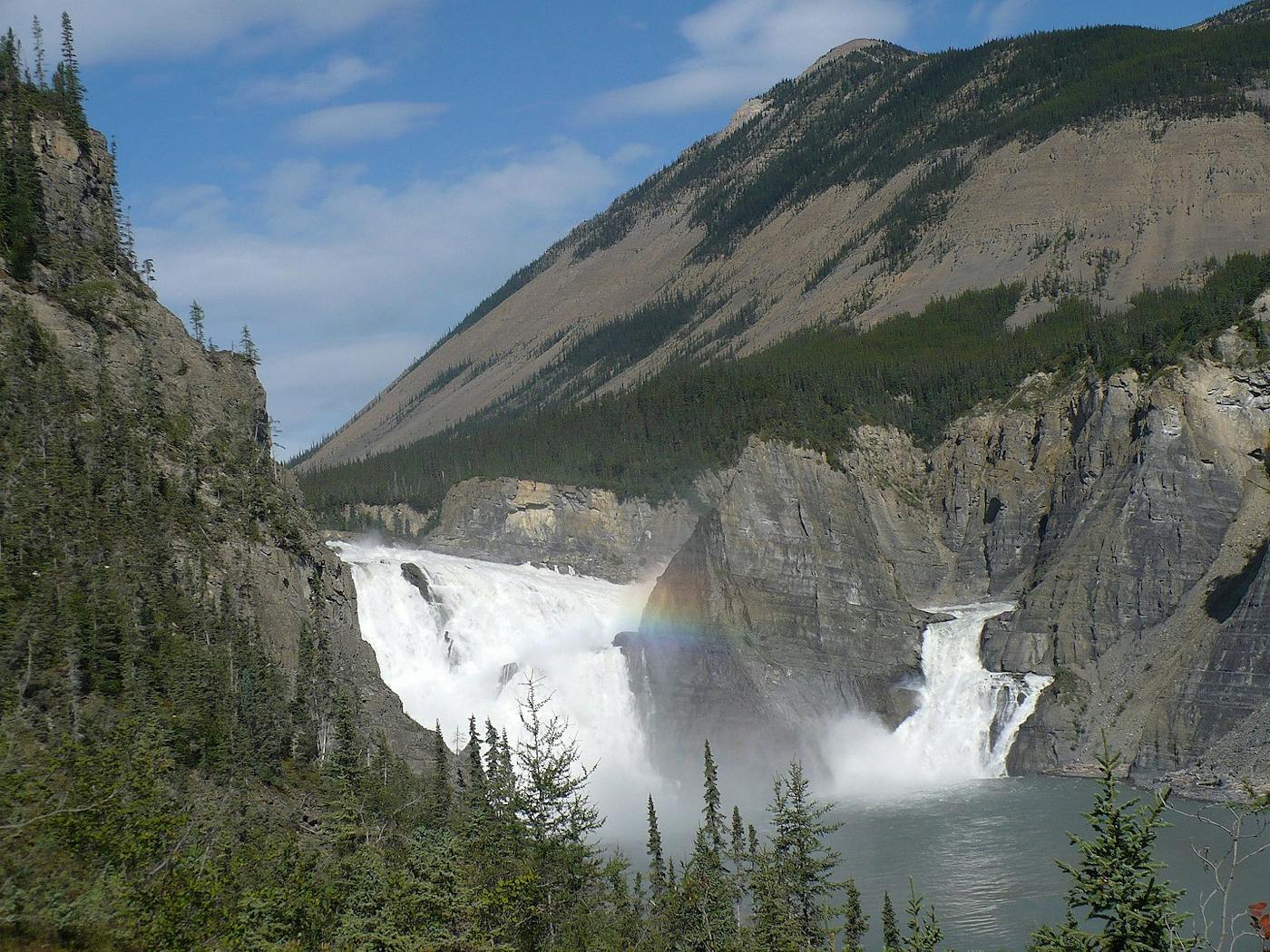Greater Yukon bioregion
The bioregion’s land area is provided in units of 1,000 hectares. The conservation target is the combined Global Safety Net (GSN1) areas for the component ecoregions. The protection level indicates the percentage of the GSN goal that is currently protected on a scale of 0-10. N/A means data is not available at this time.
The Greater Yukon bioregion, located in the Subarctic America realm, lies within the mountainous cordilleran region of western North America in the far west of the Canadian Boreal subrealm, defined by a large central plateau surrounded by some of the world’s highest mountains. This region is the source of the Yukon River, which flows west across Alaska and is dominated by boreal forest with tundra in the north. It includes three ecoregions—Northern Cordillera Forests (380), Watson Highlands Taiga (383), and Ogilvie-MacKenzie Alpine Tundra (419). The total area of this bioregion is approximately 71 million hectares.

The Greater Yukon bioregion is part of the Canadian Boreal subrealm and is made up of three ecoregions: (1) Ogilvie-MacKenzie Alpine Tundra (2) Watson Highlands Taiga (3) Northern Cordillera Forests.
Learn more about each of the Greater Yukon ecoregions below.

Explore the Bioregions
Want to learn more about the fascinating species, diverse ecosystems, and natural wonders of the Earth? Click the button below to launch One Earth's interactive navigator and discover your Bioregion!
LAUNCH NAVIGATOR




